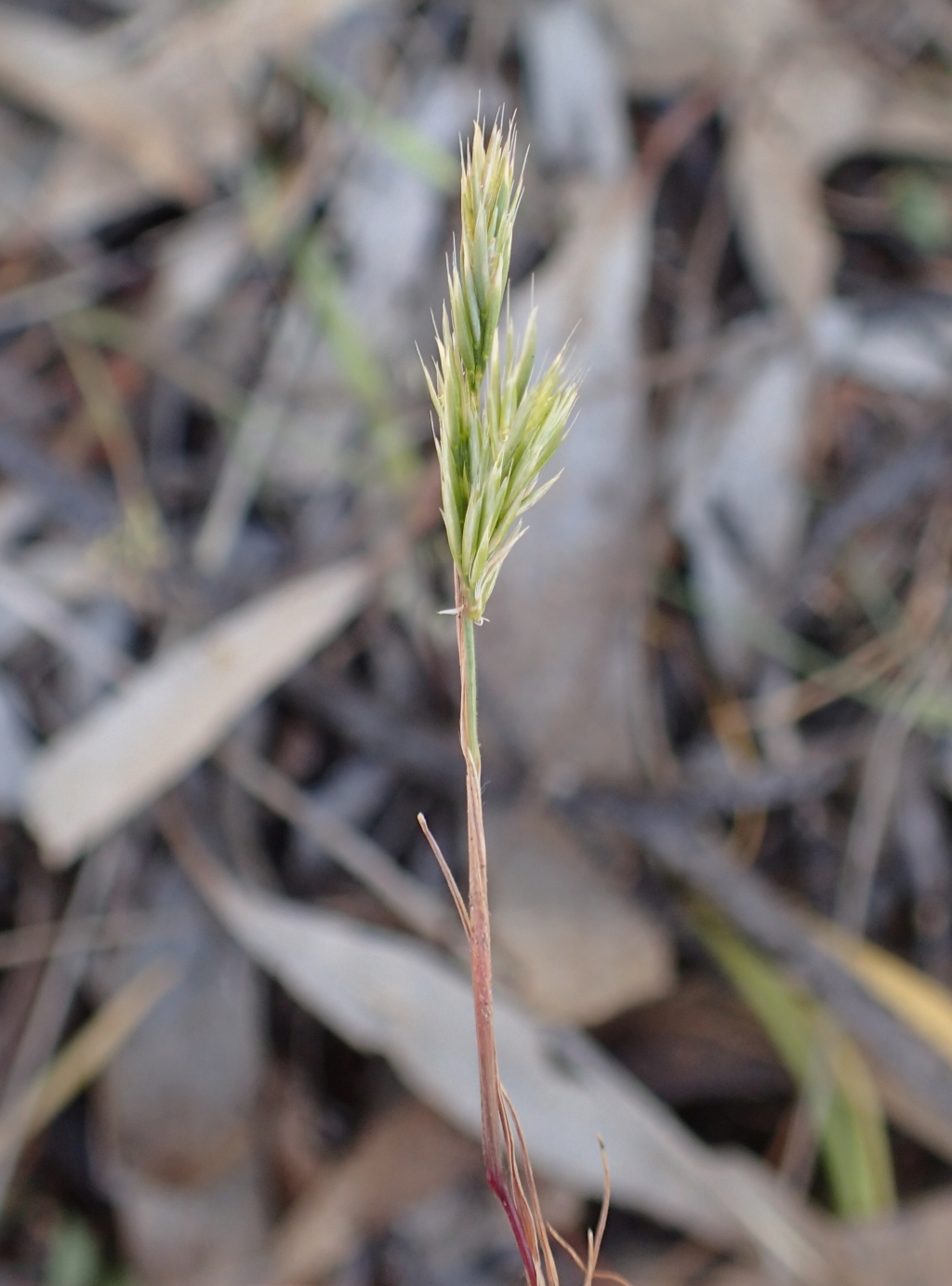Avellinia festucoides
(Link) Valdés & H.ScholzCulms erect, to 30 cm high. Leaves pubescent with short, retrorse hairs; blade to 5 cm long and 2.5 mm wide; ligule membranous, ciliate-toothed at summit, to 1 mm long. Panicle with ascending branches, 1–8 cm long; lower glume 1–2 mm long, upper glume 3–6 mm long; lemma 3–4.5 mm long, apical lobes to 1 mm long; awn fine and straight, 1.5–2.5 mm long; palea up to c. one-half as long as lemma. Flowers Sep.–Nov.
LoM, MuM, Wim, GleP, Brid, VVP, VRiv, MSB, RobP, GipP, OtP, Gold, CVU, GGr, DunT, NIS, WPro, HSF, VAlp. Also naturalised in WA, SA, Tas. Native to the Meditteranean area, widely naturalised in temperate regions of the world. An occasional weed of sandy soils chiefly in the west of the state with isolated occurrences in the north-east (e.g. Warby Ranges) and south-east (e.g. Wilsons Promontory, Gippsland Lakes).
Until recently, known as A. michelii (Savi) Parl., a synonym derived from a later base-name (Bromus michelii Savi, 1808) than that of A. festucoides (Bromus festucoides Link, 1800).
Walsh, N.G. (1994). Poaceae. In: Walsh, N.G.; Entwisle, T.J., Flora of Victoria Vol. 2, Ferns and Allied Plants, Conifers and Monocotyledons, pp. 356–627. Inkata Press, Melbourne.
 Spinning
Spinning

